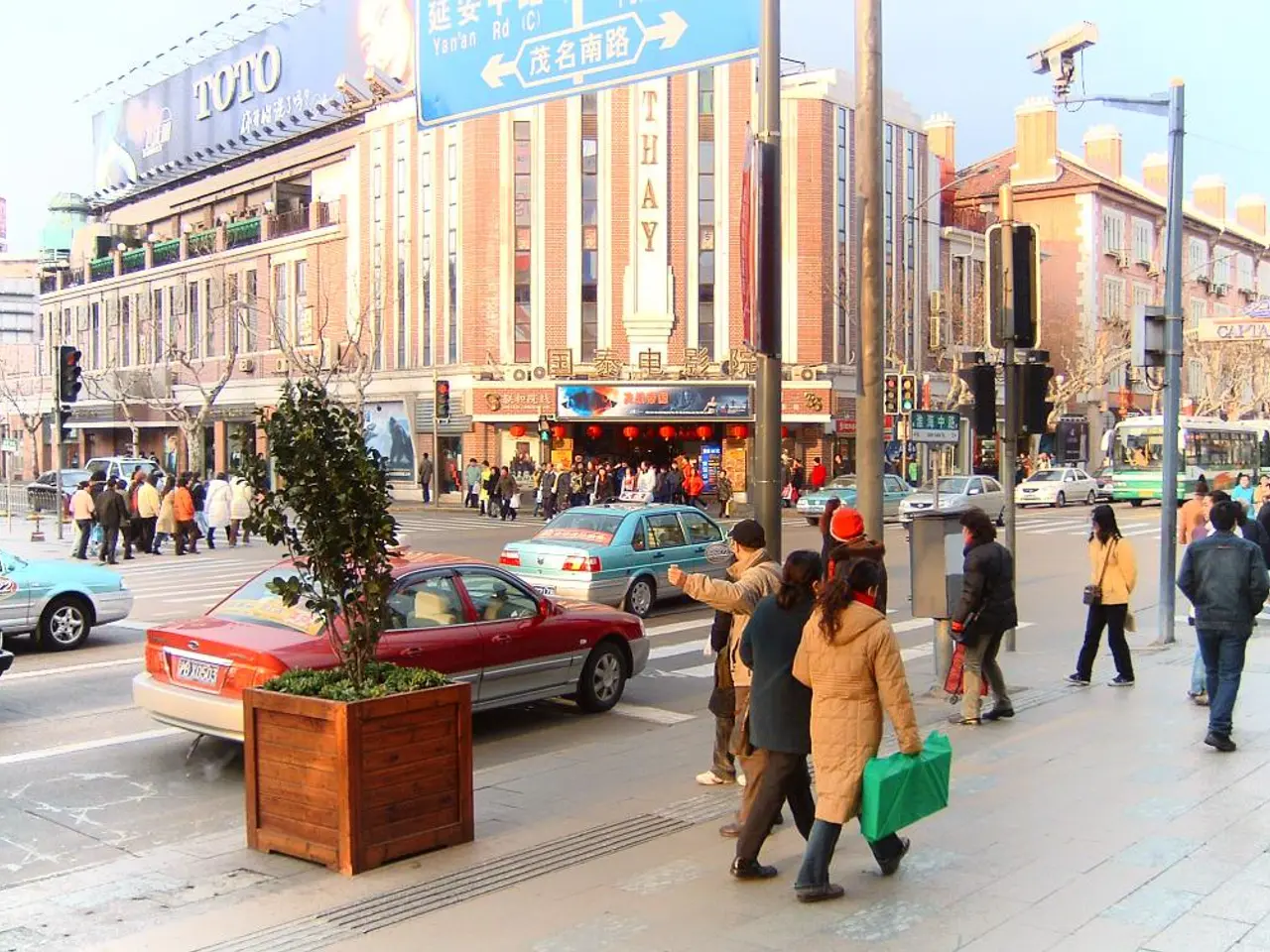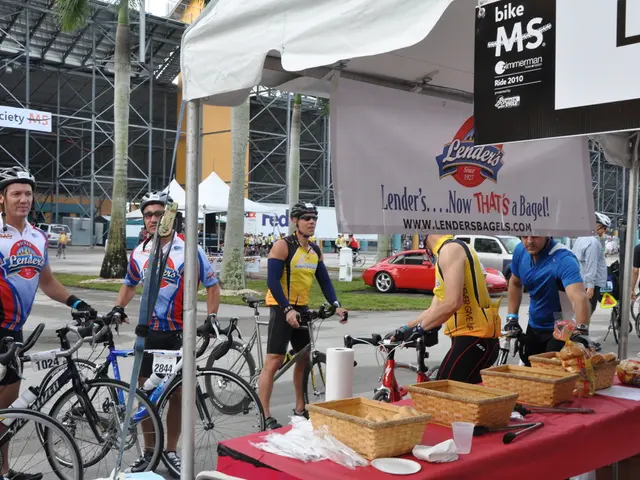Faster Paces and Shorter Stops: Researchers Discover Trend Among Walking Pedestrians
In a groundbreaking study published in the Proceedings of the National Academy of Sciences, researchers have uncovered intriguing trends in pedestrian behaviour and public space usage in three northeastern U.S. cities over the past four decades.
The study, co-authored by scholars from MIT, Yale University, the University of Hong Kong, Michigan State University, and Harvard University, delves into the factors that might have contributed to these shifts.
In 1980, coffeeshops were far less common in big cities, and the big chain coffeeshops did not exist. Fast forward to 2010, and the landscape had significantly changed. The rise of coffee shops as social hubs could be a key factor in the observed trends. As people now spend more time inside these commercial venues rather than lingering outdoors on streets or parks, pedestrian behaviour has shifted towards faster walking and fewer pauses in outdoor public areas.
Another significant factor is the rise of cellphone usage since the 1980s. Cellphones can reduce face-to-face social interactions in public spaces and increase multitasking, such as walking while texting or calling, encouraging faster walking speeds and less lingering.
The study, led by MIT's Senseable City Lab, used machine-learning tools to assess 1980s-era video footage captured by urbanist William Whyte in Boston, New York, and Philadelphia. The researchers also shot new footage in 2010 at the same locations as Whyte's footage to compare the dynamics of public spaces over time.
The results are striking. The average walking speed of pedestrians in these cities increased by about 15% from 1980 to 2010, while the number of people lingering in public spaces decreased during this period. Furthermore, the percentage of individuals entering public spaces who became part of a group declined from 5.5% in 1980 to 2.0% in 2010.
These findings could have significant implications for urban planning. Designers seeking to create new public areas or modify existing ones will find valuable insights in this study, as they strive to foster a more social and interactive urban environment.
The researchers are currently conducting an extensive survey of European public spaces to shed more light on the interaction between people and public forums. This large-scale study aims to provide a deeper understanding of how technological and commercial environment shifts can modulate how people move and congregate in cities.
Reference(s): [1] Salazar-Miranda, A., Glaeser, E., Ratti, C., Duarte, J., ... & Hampton, K. N. (2022). Exploring the social life of urban spaces through AI. Proceedings of the National Academy of Sciences. [2] The Project for Public Spaces. (n.d.). William Whyte. Retrieved from https://www.pps.org/pioneers/william-whyte/ [3] Glaeser, E. (2011). Triumph of the city: How our greatest invention makes us richer, smarter, greener, healthier, and happier. Penguin Press.
- The study's findings suggest that the rise of coffee shops over four decades might influence the behavior of pedestrians and their usage of public spaces.
- The increase in cellphone usage since the 1980s could be another factor contributing to the changes observed in pedestrian behavior and public space usage.
- MIT's Senseable City Lab, in collaboration with other universities, employed machine-learning tools to analyze video footage from the 1980s and 2010 to study these trends.
- The study reveals that the average walking speed of pedestrians in these cities has increased by approximately 15% from 1980 to 2010, coinciding with a decrease in the number of people lingering in public spaces.
- Furthermore, the research shows that the percentage of individuals entering public spaces who became part of a group has declined significantly, from 5.5% in 1980 to 2.0% in 2010.
- Urban planners may find valuable insights in this study as they work towards creating more social and interactive public environments.
- The researchers are now conducting a survey of European public spaces to gather more data on the interaction between people and public forums.
- This large-scale study aims to provide a deeper understanding of the impact of technological and commercial environment shifts on pedestrian movement and congregation in cities.
- The study emphasizes the importance of considering sustainable living, data and cloud computing, science, education and self-development, career development, fitness and exercise, health-and-wellness, lifestyle, home-and-garden, and personal growth in urban planning and space design.




